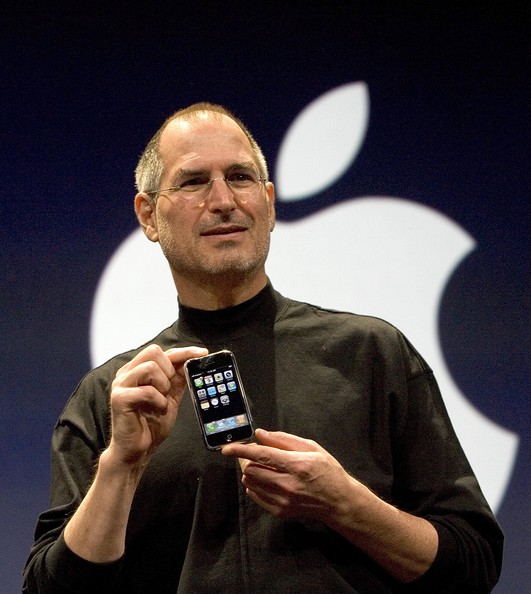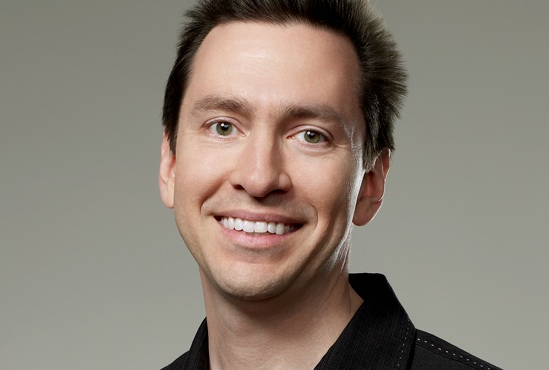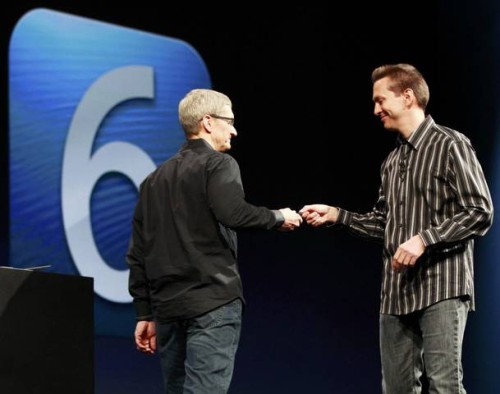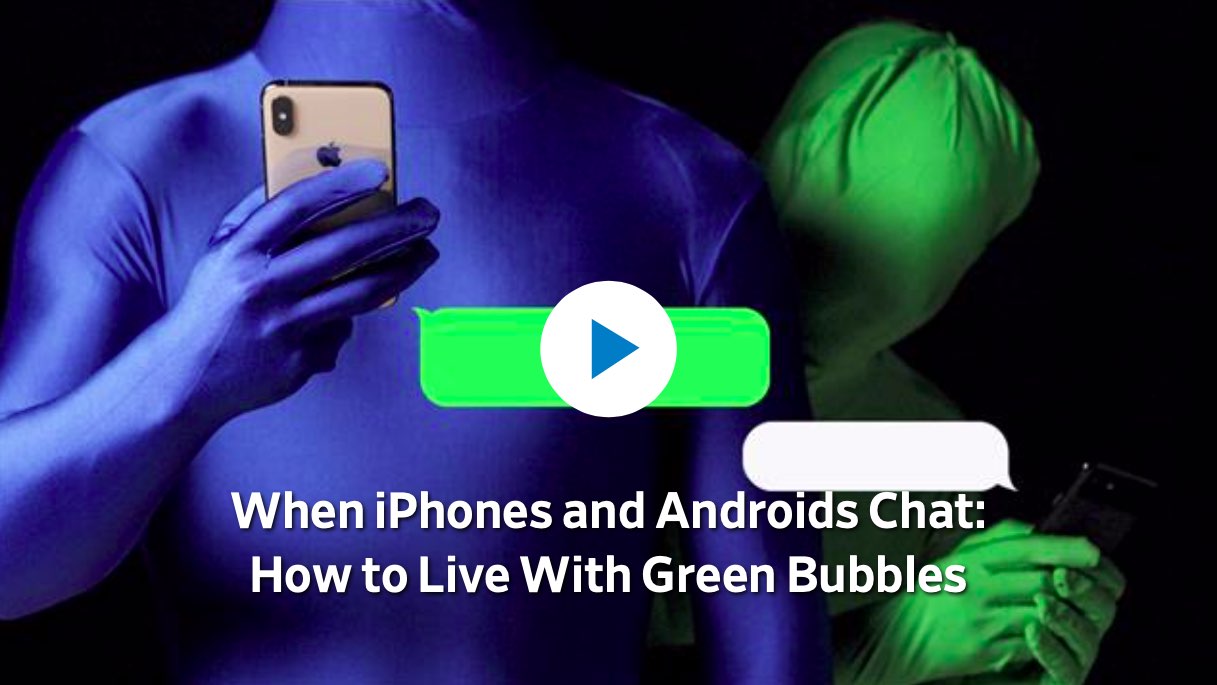Apple used to derail Adobe's now-defunct Flash software as an outdated technology past its prime. But former iOS chief Scott Forstall has revealed a little-known fact: the Cupertino tech giant actually did work with Adobe on trying to make the once-ubiquitous multimedia software work on the iPhone, but the results were just “abysmal” and “embarrassing.”
Scott Forstall
Video: former iOS chief Scott Forstall reveals tidbits about macOS & Apple TV development

Since his firing in 2012 over refusing to sign an apology to customers concerning the Maps debacle, Apple's former Senior Vice President of iOS software, Scott Forstall, has focused his energies on producing Broadway shows. Thanks to a rare interview with Scott published last week, we now have a nice glimpse of Apple's creative process during Steve Jobs's heyday.
Video: former Apple executives recount original iPhone creation

Apple earlier this year celebrated the tenth anniversary of the original iPhone's unveiling. And as we approach the tenth anniversary of the handset's June 29, 2007 debut, Christopher Mims of the Wall Street Journal sat down with the original iPhone team members who recounted designing the handset's touchscreen interface and more.
Running nine minutes long, the interview features former iOS chief Scott Forstall, former Vice President of Human Interface Design Greg Christie and the iPod “Godfather” Tony Fadell.
Fadell's team was tasked with the development of a device that was basically an iPod with a phone. It featured a clunky hardware keyboard and ran a version of the iPod interface.
“We tried 30 or 40 ways of making the wheel not become an old rotary phone dial and nothing seemed logical or intuitive,” said Fadell. “To actually dial a real number, it was so cumbersome.”
It was 2005 and Jobs was displeases with the direction of “Project Purple”.
“We’d been doing a lot designs which weren’t quite there yet. It didn’t feel complete. And Steve came to one of our design meetings and he said, ‘This isn’t good enough. You have to come up with something so much better. This is not good enough'”, Fadell recounted.
“Start showing me something good soon or I’m going to give the project to another team,” Christie paraphrased Jobs. According to Forstall, Jobs gave the team two weeks to come up with something special.
“So we went back to the drawing board and Greg assigned specific ownership of different pieces of the design to different people and that team worked 168 hours per week for two weeks. They never stopped,” said Forstall. Eventually, Forstall and Christie's vision for the user interface of the original iPhone, based on OS X code, prevailed over Fadell's click-wheel design.
Christie reflected on how their early iPhone interface designs blew Steve Jobs away:
The first time he saw it he was completely silent, he didn't say a thing. He didn't say anything, he didn't gesture, he didn't ask a question.
Then he sat back and he said, 'Show it to me again.'
And so we go through the whole thing again and Steve was pretty much blown away by the whole demonstration. It was great work.
It took them nearly two and a half years to turn that demonstration into a shipping product.
A ping pong table sized demo had a projector that was beaming a Mac interface on it, allowing engineers to use their whole hand to touch different things on it. “It was literally a ping pong sized multi-touch display,” said Tony Fadell.
And now, watch The Wall Street Journal's full video, titled "How The iPhone Was Born: Inside Stories of Missteps and Triumphs”.
According to Fadell, back at the time sales of the iPod music player accounted for half of Apple's total sales so they wondered about iPod's success long term and kept asking themselves what will cannibalize sales of the music player.
“And one of the biggest concerns was cell phones,” said Fadell.
The three former Apple execs also talk about pinch to zoom, rubber-band scrolling and more. Be sure to watch the whole thing, it's definitely worth ten minutes of your time.
Watch rare interview with former iOS chief Scott Forstall and original iPhone team members

The Computer History Museum last night hosted Pulitzer Prize journalist John Markoff (formerly of the New York Times) who interviewed former iOS chief Scott Forstall and the original iPhone engineering team members Hugo Fiennes, Nitin Ganatra and Scott Herz.
“We knew we were doing something right with the user interface design,” Forstall told Markoff, citing an example of a two-year old girl and a 99-year old woman who could use iPhone and iPad without any user manual.
“The team was amazing and we knew we were doing something right,” he added.
“The first text I ever sent was on my iPhone, because texting on other devices was horrid,” he revealed. Commenting on Apple's late co-founder Steve Jobs, Forstall called him “the most intense person I’ve ever known.”
Jobs was “super driven, demanding and forced people to do their best,” Scott said.
“When he was sick, I’d go to his house every day. On some days, he couldn’t open his eyes,” he said of Steve's passing. “We got Siri right before he passed and he loved it because he was too weak to type. I was surprised, it just seemed like he’d always be there.”
Asked to comment on the then controversial skeuomorphic design, which imitates real-world materials like leather in software, Forstall responded by saying the following:
I never heard the term skeuomorphism, even years after we built iPhone.
I mean, that’s a horrible word. It sounds unnatural, it just sounds terrible. When I look at good design—when I look for good design—I look for something which is easy to use.
Approachable and friendly that you can use without a manual.
If you look at the designs we did at Apple, we talked about photo-illustrative, metaphorical designs. And those were infused into the design sense of Apple by Steve Jobs since the original Mac if not earlier. The original Mac had a desktop and folders that looked very much like the desktop on which that Mac sat.
And so we used these design philosophies. It doesn’t mean that we loved every single part of it. It doesn’t mean I loved every single part of it. There’s definitely things that I was less a fan of than others. But we built these designs that worked. And how do we know they worked? You just had to watch people use it.
Here's the full video of the interview (the Forstall part begins at 1:07).
https://www.youtube.com/watch?v=zjR2vegUBAo
The original video is available on Facebook.
Asked if there ever was a time he shook his head at something about iPhone (assuming he's still using one), Forstall said this:
That happens all the time. If you’re a designer, if you care about design, you can’t go through any part of your life without shaking your head and thinking that could have been done better. And I thought that for our design, even the first version. The second version you’re always making it better.
On Apple secrecy:
The thing about Apple is we all get it, we all live in that culture. They were very respectful. You develop a talent for describing what you’re working on without giving too many details.
Fiennes added that the first time he saw pinch-zooming was at the original iPhone keynote. Ganatra said he heard Forstall on many occasions talking about scrolling deceleration, adding he was “being very detailed about scrolling and how the UI responds to touch.”
“There’s a lot of math that goes into making it work so well,” said Ganatra.
And to illustrate Apple's legendary attention to detail, Fiennes said Jobs asked him to move the processor in an iPhone a couple of millimeters in order to make the printed circuit board (which ordinary users never get to see) symmetrical.
Forstall suggested Apple kicked off work on a tablet project, dubbed Project Purple, because Steve hated an unnamed Microsoft employee (Scott says it wasn't Bill Gates).
“It began because Steve hated this guy at Microsoft. That is the actual origin. Every time Steve had any social interaction with that guy, he would come back pissed off,” said Forstall.
“Steve came in on a Monday, there was a set of expletives and then he said, 'Let's show them how it's really done'.”
Steve later put the tablet project on hold to work on iPhone, asking Scott if they could take a rubber-band scrolling demo they were doing with the tablet and shrink it down to a phone.
The rest, as they say, is history.
I also like this anecdote on how Jobs scammed Apple for free lunch:
He and I would go to the cafeteria at Apple all the time, and he would insist on paying. I was like, you're paying me enough that I can afford the $8 lunch, but he'd always, if he got his food before he'd wait at the line for me to get up there and he'd pay.
And he made it so you could pay with your Apple badge.
So you'd come up there and you'd badge in, and it would be directly withdrawn from your paycheck. Somehow, I was like, 'Why are you, really, go sit down, I feel like an ass when you're sitting up there waiting for me and I can't get any long-cooking food.'
Steve said 'No, no, no, this is great. I only get paid $1 per year. I don't know who's paying every time I badge!' He was a multi-billionaire scamming Apple!"
The lunch story is at mark 1:56 in the video.
Although Forstall isn't currently building anything himself, he's “doing a lot” in terms of advising startups and Broadway (he has always loved theater and even used to act).
“It was always a passion” he said. “When I left Apple, I was introduced to a woman and we hit it off and she said ‘we should produce something on Broadway.’” Doing a Broadway show, he says, is like managing a startup.
“You start with the creative types, you invent something, then you put a bunch of money and effort and time behind it and you give it to the public.”
At the end of the interview, Forstall thanked everyone in the audience who had participated in creating iPhone, iPad and iOS. “It's not one person or even four people,” he said. “It was hundreds and thousands of people who made it happen.”
It is no secret that Forstall was a divisive figure within Apple due to its exacting standards, demanding demeanor and abrasive management style.
He was fired in a major management shakeup in October 2012, in part due to his alleged refusal to sign an apology letter over the Apple Maps debacle, prompting CEO Tim Cook to issue a public apology to Apple customers.
Scott Forstall and Apple: no hard feelings, really
In an interview with the Wall Street Journal about his new role as a Broadway producer, Scott Forstall had few but nice things to say about Apple:
Asked about the split, Mr. Forstall said he was “so proud of the thousands of people I worked with [at Apple] and with whom I remain friends. I am delighted that they continue to turn out great and beloved products.”
The whole interview is an interesting read, along as you care about either Scott Forstall or musicals in general.
Scott Forstall is now producing a Broadway musical

Scott Forstall just announced that he has taken on a new project, and it doesn't have anything to do with tech. In his first-ever tweet, the former iOS chief said that he is co-producing the Broadway musical "Fun Home," and it is slated to open this Sunday.
Forstall's name doesn't appear to be mentioned on the Fun Home website, but a quick search reveals the show's Playbill, which lists both Scott and his wife Molly as producers. "This is Scott and Molly's first foray on Broadway after years in Silicon Valley."
Former iOS chief Scott Forstall is an advisor for Snapchat

Those wondering what former iOS chief Scott Forstall has been up to since leaving Apple in 2013 may be interested to know that he has been helping out Snapchat. According to leaked emails from Snapchat board member Michael Lynton, Forstall has been a paid advisor for the messaging startup since January 2014.
In fact, he's very well paid. Lynton's email indicates that Snapchat set aside .11% of fully-diluted stock for the ex-Apple exec, with options vesting over 24 months. And given that the company was recently valued at $15 billion, that would make Forstall's stake worth somewhere in the neighborhood of $16.5 million.
Apple’s marketing head honcho Phil Schiller to appear on the witness stand again

Phil Schiller, Apple's Senior Vice President of Worldwide Marketing, will take the witness stand again in the second Apple v. Samsung trial due in March, a pair of court filings PCMag spotted on Thursday have revealed.
Furthermore, Apple's former iOS boss Scott Forstall seems to be on Apple's and Samsung's lists for possible live testimony! Forstall hasn't spoken publicly since he got pushed out of the company on October 29, 2012 over the Apple Maps debacle...
Post-Apple, Scott Forstall said to be traveling abroad, advising startups

Ex-Wall Street Journal tech reporter Jessica Lessin recently launched a new technology news site called The Information. The site promises to provide the inside scoop on technology news and trends, and thus far it's made good on that.
Today the site is out with a report that helps answer the frequently-asked question: "what has Scott Forstall been up to since he was ousted from Apple last fall?" The former iOS Chief has been extremely quiet since he left the company...
Phil Schiller, Scott Forstall could testify in Samsung damages trial

Since Apple announced his exodus last fall, we've seen and heard very little from Scott Forstall. Actually, we haven't seen him at all, and the only time we've heard his name mentioned has been in skeuomorphic jokes.
But that could change next month. According to a new report, Mr. Forstall could finally be forced out of hiding to appear as a witness alongside Phil Schiller in a partial damages retrial between Apple and Samsung...
Cook on firing Forstall: we needed to take collaboration to another level

As we're counting down the remaining hours until Tim Cook's first television appearance due at 10pm Eastern, 7pm Pacific, Bloomberg Businesweek's Josh Tyrangiel had way too interesting fireside chat of his own with Apple's boss, resulting in a massive 11-page article. Cook spoke about the shake-up and ouster of long-time Jobs confidant and iOS architect Scott Forstall, describing the decision as a matter of taking collaboration at Apple "to another level".
He also praised the skill sets brought to the table by SVP of Internet Software & Services Eddy Cue, SVP of Technologies Bob Mansfield, SVP of Industrial Design Jony Ive and the recently-minted SVP of Software Engineering Craig Federighi, all tasked now with addressing the different aspects of iOS and OS X that happened to be under Forstall's more or less direct control...
